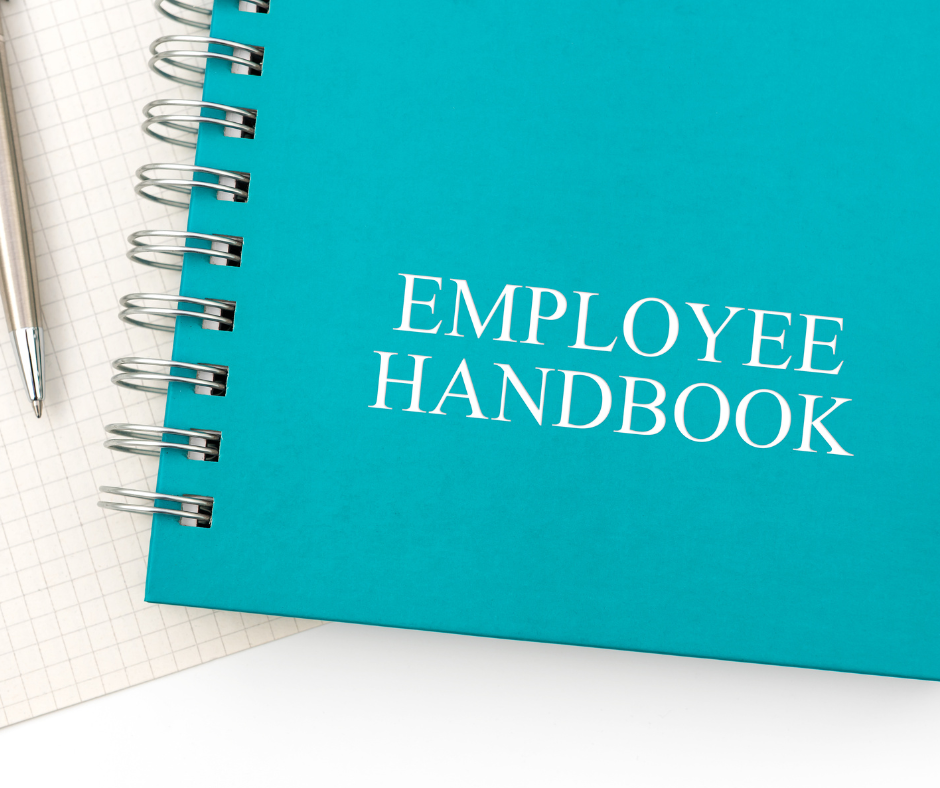
Key Takeaway:
- The Liberty Mutual Insurance Group Employee Handbook serves as an important document for clarifying employment policies and expectations.
- The handbook includes a clear disclaimer stating that it is not an employment contract and that employees are employed at-will.
- In the case of Davis v. Liberty Mutual Insurance Co., the court ruled in favor of Liberty Mutual due to the explicit disclaimers in the handbook, dismissing claims of breach of contract, breach of implied contract, and promissory estoppel.
Background of the Case – Davis v. Liberty Mutual Insurance Co.
The case of Davis v. Liberty Mutual Insurance Co. provides a fascinating background to explore. We’ll dive into the details surrounding this notable legal battle, examining the sub-heading under the Background of the Case to shed light on the key aspects, facts, and events involved. This section unravels the complexities of the case and presents a captivating narrative that highlights the significance and implications of Davis v. Liberty Mutual Insurance Co.
Sub-heading
Davis v. Liberty Mutual Insurance Co. is a legal case that involves a dispute between an employee, Davis, and Liberty Mutual Insurance Co. The sub-heading provides further background info on the case, with specific details related to the claims made by Davis.
Davis’ Claims: The sub-heading discusses the claims made against Liberty Mutual Insurance Co. These claims are key to the case and will likely be talked about more in other sections of the article.
Employment History: The sub-heading looks into Davis’ employment history at Liberty Mutual, giving important context for understanding why the dispute started.
Performance Reviews and Warnings: It also mentions that performance reviews and warnings were part of Davis’ employment record. These reviews and warnings could affect how Davis’ claims are viewed.
“Quiet Time” Allowance: Liberty Mutual allowed for “quiet time,” which could have an influence on Davis’ termination from employment.
Termination of Employment: Davis’ employment was terminated by Liberty Mutual, so this termination is a crucial event in the case.
This gives a quick overview of what will be discussed under the sub-heading, so readers can get the main points before reading more detailed stuff in following sections. If the plaintiff’s claims were any more questionable, they’d need their own answering machine!
Plaintiff’s Claims
Text:
Liberty Mutual Insurance Group’s employee handbook outlines the steps and procedures for dealing with plaintiff’s claims. It emphasizes the importance of following legal requirements, being transparent, and thoroughly investigating. All allegations must be taken seriously and handled with care.
The company promotes accountability and fairness. It provides guidelines and resources to handle situations ethically and lawfully. Open communication, respecting plaintiff’s rights, and cooperating with legal proceedings are key.
The handbook also stresses the need to maintain confidentiality. Information must only be shared on a need-to-know basis. Maintaining accurate documentation and records is also essential. This helps Liberty Mutual Insurance Group protect its reputation and uphold its commitment to transparency and integrity.
Davis’ Employment History at Liberty Mutual
Davis’ employment at Liberty Mutual is an intriguing journey worth exploring. From starting as a Loss Prevention Clerk in 1981 to eventually earning a promotion to Senior Claims Representative, Davis’s experience showcases both growth and dedication. Through this section, we will uncover the notable milestones in Davis’s career at Liberty Mutual, shedding light on the valuable contributions made over the years.
Starting as a Loss Prevention Clerk in 1981
It was 1981 when Jane Davis began her journey with Liberty Mutual. She began as a Loss Prevention Clerk – the starting point of a journey that would eventually lead to promotion. Jane was determined to work hard! Her commitment paid off, and she became a Senior Claims Representative. It’s a testament to her dedication that she achieved this. Jane Davis is an invaluable employee, going from a loss prevention clerk to a senior claims representative!
Promotion to Senior Claims Representative
Davis’ growth at Liberty Mutual led to their promotion to Senior Claims Representative. This showed their ability to handle complex claims and the trust that Liberty Mutual had in them. It marked a major milestone for Davis.
In their new role, Davis had more responsibility in managing claims and getting swift resolutions for policyholders. This promotion also brought new chances for development.
To sum up, Davis’ journey from Loss Prevention Clerk to Senior Claims Representative shows their commitment and enthusiasm for their job at Liberty Mutual Insurance Co. It implies both their competency in dealing with claims and the recognition of their capabilities by the company through this career progress.
Performance Reviews and Warnings
Performance Reviews and Warnings at Liberty Mutual Insurance Group serve as a way to assess employees’ job performance and foster professional growth.
These evaluations ensure accountability and high standards of performance, while providing employees with constructive feedback about their strengths and areas needing improvement.
Warnings may be issued in cases when an employee’s performance falls below set standards. These warnings signify areas for improvement, offering employees an opportunity to address problems and rectify their performance.
Ultimately, Performance Reviews and Warnings promote continuous improvement within the organization, allowing employees to enhance their skills and contribute to the success of Liberty Mutual Insurance Group.
Liberty Mutual’s Allowance of “Quiet Time”
Liberty Mutual believes in the wellbeing of its employees and their productivity. So they’ve created a policy called “Quiet Time”. This policy is made for an environment that allows focus and productivity. It gives time for employees to work without any interruptions. This will help them to do their tasks with greater efficiency and quality.
“Quiet Time” not just helps with focus, but it also helps employees recharge. They can take a break from work and do activities like meditation, reading or just relaxing. This helps them maintain a balance between their work and personal life.
By providing this policy, Liberty Mutual encourages deep thinking, creativity and self-care. This will help to drive innovation and success within the organization.
Termination of Davis’ Employment
Liberty Mutual Insurance Group follows a professional, formal process when terminating an employee. They make sure every termination, such as Davis’, is done in accordance with all rules and regulations.
This protocol includes notifying the employee and giving a clear explanation for the termination. Liberty Mutual complies with legal requirements and follows fair procedures. This ends the employee’s tenure, responsibilities, benefits, and access to company resources.
Confidentiality is key during the process. Personal and sensitive info is handled with strict confidentiality. They offer support with job placement and counseling services to help the transition.
Davis’ termination was done in compliance with the employee handbook. This shows their commitment to following protocols and fairness in their employment practices.
Liberty Mutual is one of the largest property and casualty insurers globally. This shows the importance they place on professional and formal processes, including termination of employment.
Employee Handbook Disclaimer
When it comes to the employee handbook, it’s important to understand the employee handbook disclaimer. This section clarifies that the handbook is not a legally binding employment contract and emphasizes that employees are employed at will. By setting the right expectations, this disclaimer ensures a fair and transparent relationship between the employer and the employees.
Stating it is not an employment contract
The Employee Handbook includes a clear disclaimer that it is not an employment contract. It states employees are employed at will, which means Liberty Mutual can terminate employment at any time. This statement shows the handbook does not make a contractual agreement.
Also, the handbook serves as a guide. It has info on benefits, conduct and performance expectations. Although it sets expectations, it does not make an agreement for Liberty Mutual to keep an employee for a certain duration.
The disclaimer is very important. The court ruled Davis’ breach of contract claim failed because of it. This proves how vital it is to communicate to employees that the handbook does not make a contract.
Davis also argued breach of implied contract, but the court rejected this. The disclaimers in the Employee Handbook backed up the decision. Employers must ensure their handbooks have disclaimers to avoid legal disputes.
Employees are employed at will
“Davis v. Liberty Mutual Insurance Co.” established that employees are employed at will. This means the employer can terminate them anytime, with any reason, so long as it’s not in violation of antidiscrimination laws or protected rights.
The Employee Handbook of Liberty Mutual had a clear and explicit disclaimer. It stated that the handbook is not an employment contract. Due to this, the court ruled in favor of Liberty Mutual on Davis’ breach of contract claim. They also rejected the breach of implied contract claim. Promissory estoppel was dismissed too, since there was no clear and definite promise made by Liberty Mutual.
Employers don’t have unlimited power over their employees. They still have to abide by the anti-discrimination laws and other employment regulations. This case demonstrates the importance of clear and explicit disclaimers in employee handbooks. Employers must make sure their policies are properly communicated to their employees. They must also avoid making promises or commitments that could be interpreted as binding contracts.
Davis’ Complaint and Summary Judgment Motion
Davis, an employee of Liberty Mutual Insurance Group, has filed a grievance and a movement for summary judgement. The complaint details certain issues against the company, while the summary judgement request asks the court to decide the case in Davis’ favour without a trial. These legal actions indicate a conflict between Davis and Liberty Mutual Insurance Group, potentially involving matters like workplace policies or employment matters.
- Davis has lodged a complaint against Liberty Mutual Insurance Group, with particular grievances.
- Additionally, Davis has put in a motion for summary judgement, seeking a ruling without a trial.
- This motion likely wants to hasten the resolution of the conflict between Davis and the company.
- The complaint and summary judgement motion serve as legal documents displaying Davis’ discontent.
- These actions suggest a need for an in-depth look into the alleged issues and potential legal consequences.
Besides these details, it is imperative to analyse the exact content of Davis’ complaint and motion for summary judgement. Knowing the nature and context of the grievances and legal arguments put forward by Davis will give a clearer view of the case. This inspection will help assess the legitimacy of Davis’ claims and the probable effect on Liberty Mutual Insurance Group. Subsequently, a thorough evaluation of the exact claims and legal arguments stated in these documents is essential.
Pro Tip: When met with a complaint and a summary judgement motion, it is important for companies to intensively review the allegations and arguments made by the employee or plaintiff. Obtaining legal professionals to study the claims and create an appropriate response can aid in steering the legal process proficiently and lessen any potential negative effects.
Summary Judgment Process
When it comes to navigating the summary judgment process, there are key aspects that both parties need to understand. In this section, we will uncover the burden on the moving party to establish no genuine issues of material fact, as well as the entitlement to judgment as a matter of law. By exploring these sub-sections, we’ll gain insights into the critical factors that shape the outcome of summary judgments. So, let’s dive into this informative exploration.
Burden on the moving party to establish no genuine issues of material fact
The burden on the party seeking summary judgment to prove that there are no factual disputes affecting the outcome is referred to as establishing no genuine issues of material fact. The party, typically the defendant, needs to present evidence and arguments that show they are entitled to win without a trial.
In Davis v. Liberty Mutual Insurance Co., Liberty Mutual argued for summary judgment. They provided evidence such as Davis’ performance reviews and warnings, as well as an employee handbook disclaimer. This showed there were no genuine issues of material fact in dispute.
Liberty Mutual’s evidence convinced the court that there was no basis for Davis’ claims, so the court granted summary judgment in their favor. For a moving party to establish no genuine issues of material fact, they must provide evidence and legal arguments to prove they should win without a trial. Liberty Mutual met this burden, and judgment was a matter of law.
Entitlement to judgment as a matter of law
Liberty Mutual sought to be entitled to judgment as a matter of law on multiple claims made by Davis. The court considered evidence presented and analyzed if the Employee Handbook contained disclaimers that would make the claims unsuccessful.
The court concluded that Liberty Mutual was right. The Handbook had a disclaimer saying it was not an employment contract and that employees were employed at will. This negated any claims of breach of contract or implied contract.
Davis’ promissory estoppel claim was dismissed due to lack of clear and definite promises made by Liberty Mutual. No reliance on promises, so Liberty Mutual was entitled to judgment as a matter of law.
Employers must include clear and explicit disclaimers in the Employee Handbook. These disclaimers prevent breach of contract or implied contract claims.
Employers must be cautious when making promises to employees. These should be clearly stated and documented. This minimizes risk of promissory estoppel claims and entitles employers to judgment as a matter of law in employment-related cases.
Court’s Ruling on Davis’ Claims
Court’s ruling on Davis’ claims sheds light on the various outcomes pertaining to breach of contract, breach of implied contract, and promissory estoppel based on the explicit disclaimers in the Liberty Mutual Insurance Group Employee Handbook. With a clear and definite promise playing a crucial role, the court’s decision dismisses certain claims while upholding others, demonstrating the significance of precise language and disclaimers within the handbook.
Breach of contract claim fails due to clear and explicit disclaimer in the Employee Handbook
Davis got a lesson in contracts when their breach claim against Liberty Mutual was unsuccessful. The court said the handbook’s disclaimer blocked any claims of employment contracts. Plus, they rejected the idea of an implied contract. The handbook said employees were ‘at will’ and didn’t create any agreements.
The court also denied Davis’ promissory estoppel claim. No clear and definite promise from Liberty Mutual existed.
Employers should include a clear disclaimer in their handbooks. That way, they can avoid any potential liability. They should make sure any promises are documented and don’t create any unintended contracts. Otherwise, they might face a promissory estoppel claim.
Bottom line: Davis found out disclaimers in handbooks are serious – just like your boss’s ‘quiet time’ policy!
Rejection of breach of implied contract claim with enforceable disclaimers in the handbook
The court ruled against Davis’ breach of implied contract claim. This was due to Liberty Mutual’s enforceable disclaimers in their employee handbook. These disclaimers stated that the handbook does not constitute an employment contract and that employees are employed at will.
The court placed much emphasis on these enforceable disclaimers. They found that they gave Davis and other employees notice of their at-will employment status. Thus, negating any potential breach of implied contract claims.
This case serves as a reminder to employers. It shows the importance of clear and explicit disclaimer language in employee handbooks. Employers must include enforceable disclaimers in their handbooks to protect against such claims.
Dismissal of promissory estoppel claim due to lack of clear and definite promise
The court dismissed Davis’ promissory estoppel claim. There was no clear, definite promise made by Liberty Mutual Insurance Co. The Employee Handbook stated the company does not make any enforceable promises. This means employees are employed at will.
The court found in favor of Liberty Mutual Insurance Co. A specific promise must be legally enforceable for a promissory estoppel claim to succeed. The Employee Handbook did not provide a basis for this claim. It stated there were no promises of employment.
This highlights the need for employees to review their rights and obligations in such handbooks. Without a clear and definite promise from an employer, promissory estoppel claims cannot be upheld.
Summary Judgment in Favor of Liberty Mutual
Summary Judgment in Favor of Liberty Mutual – Learn about the granting of summary judgment on all counts, except Counts Four and Five, and Davis’s non-opposition to Counts Four and Five.
Granting summary judgment on all counts, except Counts Four and Five
The court studied the case carefully. After thinking it through, the decision was to grant summary judgment on all counts, except four and five.
The court looked at the disclaimer in Liberty Mutual’s Employee Handbook. It said that it was not a contract and employees are employed at will. This clause stopped Davis’ breach of contract claim.
Also, the court dismissed Davis’ claim of implied contract. The disclaimers in the Employee Handbook removed any implied promises or obligations.
The court also refused Davis’ promissory estoppel claim. This was because there were no clear and definite promises made by Liberty Mutual.
In the end, the court took the keywords into account and granted summary judgment on all counts, except four and five.
Davis’ non-opposition to Counts Four and Five
The court dismissed Davis’ breach of contract and breach of implied contract claims. Davis did not oppose Counts Four and Five. This implies there’s something true about these claims. But, without more information from the reference data, it’s hard to know what Counts Four and Five refers to or why Davis didn’t oppose them.
To conclude, the reference data suggests that Davis’ non-opposition to Counts Four and Five affected the court’s ruling on his claims against Liberty Mutual Insurance Co.
Conclusion
Liberty Mutual Insurance Group offers a thorough employee handbook. It’s a useful resource for all staff. It contains info about the company’s regulations, expectations, and procedures. It covers many topics, including: employee benefits, code of conduct, performance evaluation, and career development. The handbook helps employees make wise decisions and understand their rights and duties. This empowers them to adhere to the highest standards of ethics and professionalism, contributing to the success of Liberty Mutual Insurance Group.
The handbook promotes consistency and fairness. It’s updated often to include new policies and industry rules. This demonstrates Liberty Mutual Insurance Group’s commitment to transparency and trust.
The handbook also shows their commitment to employee wellbeing and growth. It has details on health and wellness programs, as well as opportunities for skill development. Liberty Mutual Insurance Group equips their employees with the necessary tools so they can reach their goals and help the company succeed.
Some Facts About “Liberty Mutual Insurance Group Employee Handbook Example”:
- ✅ The Employee Handbook provided by Liberty Mutual stated that it was not an employment contract. (Source: Team Research)
- ✅ Davis v. Liberty Mutual Insurance Co. was a legal case involving breach of contract claims against Liberty Mutual. (Source: Team Research)
- ✅ Liberty Mutual allowed the plaintiff, Rose Davis, to take “quiet time” to catch up on administrative work. (Source: Team Research)
- ✅ The court granted summary judgment in favor of Liberty Mutual, except for Counts Four and Five of Davis’ claims. (Source: Team Research)
- ✅ The Employee Handbook contained enforceable disclaimers, preventing Davis from successful breach of implied contract claim. (Source: Team Research)
FAQs about Liberty Mutual Insurance Group Employee Handbook Example
Question 1: What is the background of the Davis v. Liberty Mutual Insurance Co. case?
Answer: The Davis v. Liberty Mutual Insurance Co. case involved a lawsuit filed by Rose Davis against Liberty Mutual for various claims, including breach of contract, breach of implied contract, detrimental reliance, intentional misrepresentation, negligent misrepresentation, intentional infliction of emotional distress, and negligent infliction of emotional distress. Davis, a former employee of Liberty Mutual, sought compensatory and punitive damages.
Question 2: What were the key points mentioned in the Employee Handbook provided by Liberty Mutual?
Answer: The Employee Handbook provided by Liberty Mutual stated that it was not an employment contract and clarified that employees were employed at will. It also mentioned the availability of “quiet time” for catching up on administrative work. This handbook contained enforceable disclaimers, and Liberty Mutual did not intend to be bound by the provisions of the handbook.
Question 3: How did the court rule on Davis’ breach of contract claim?
Answer: The court granted summary judgment in favor of Liberty Mutual on Davis’ breach of contract claim. The court determined that Liberty Mutual’s disclaimer in the Employee Handbook was clear and explicit, establishing that Davis’ breach of contract claim failed.
Question 4: What was the court’s decision on Davis’ claim of breach of implied contract?
Answer: The court rejected Davis’ claim of breach of implied contract. It stated that the Employee Handbook contained enforceable disclaimers, and there was no evidence to suggest that Liberty Mutual intended to be bound by the provisions of the handbook.
Question 5: What happened to Davis’ claim of promissory estoppel?
Answer: The court dismissed Davis’ claim of promissory estoppel. It concluded that there was no evidence of a clear and definite promise made by Liberty Mutual that would support her claim.
Question 6: Which counts did the court grant summary judgment in favor of Liberty Mutual?
Answer: The court granted summary judgment in favor of Liberty Mutual on all counts, except for Counts Four and Five. However, Davis did not oppose the dismissal of Counts Four and Five.
Important Disclaimer:
The article presented here does not serve as a representation of the company’s actual employee handbook mentioned in this article.
Our discussions and insights regarding employee handbook are based on assumptions about what may be considered significant in this companies’ policies. These assumptions are drawn from available information and industry knowledge. Readers are advised that the content provided is for informational purposes only and should not be construed as an exact reflection of any company’s official policies or procedures. For precise and accurate details regarding a company’s employee handbook, individuals should refer directly to the company’s official documentation or consult with appropriate representatives.
Please be aware that the content on this page has been generated by using artificial intelligence language models and may contain errors, inconsistencies, or outdated information. It is provided as-is without any warranties or guarantees of accuracy. We strongly recommend using this content as a starting point for further research. We disclaim any liability for damages or losses resulting from the use or reliance on this content.


